How to Overcome the 10 Dysfunctions in Product Management
Contents
Recent Posts
From Projects to Products: How Best Egg Evolved Their Operating Model
Assessing the ROI of Your Product Strategy
How to Find Product-Market Fit in B2B2C: The Complete Strategic Guide
How I Drove 4X Product Usage as a Fractional CPO
From Overwhelmed to Empowered: AI for Product People
Related Posts
Assessing the ROI of Your Product Strategy
Advisor Case Study: Confidence as the Key Outcome
How to Perform Effective Midyear Check-ins
Get New Content
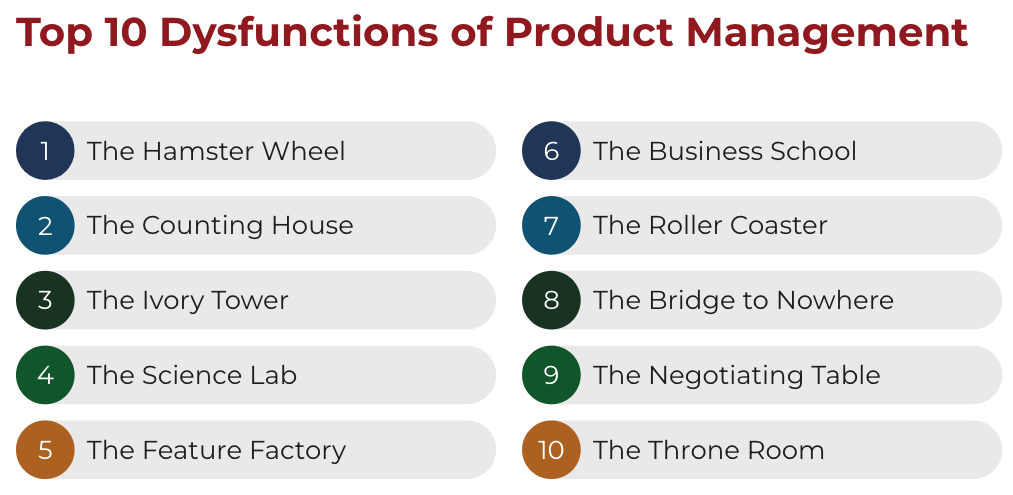
The first chapter of Prodify’s book Build What Matters highlights the 10 Dysfunctions of Product Management, which identify the most common product challenges we have seen both personally and from working with clients. The first time I read these dysfunctions, they immediately resonated with me. I personally experienced them and worked hard to overcome them as a product leader.
And now, as an advisor and coach to other product leaders and teams, I see how the dysfunctions really speak to clients. It helps give a name to a problem they are experiencing and makes them feel not alone. Even more importantly, it helps identify a path for a solution. Why is that so important? Because these dysfunctions get in the way from delivering the value we are looking to provide. By identifying where our problem areas are, we can work to find a solution to move forward. After all, acknowledging there is a problem is the first step to recovery.
The Top 10 Dysfunctions in Product Management and How To Overcome Them
In case you haven’t read the book or heard us speak to the dysfunctions live, I have laid them out for you below with tips for how to combat them. As you read through these, consider how many apply to your company and the impact it is having on your product team to drive value.
1. The Hamster Wheel: Focusing on Output Over Outcomes
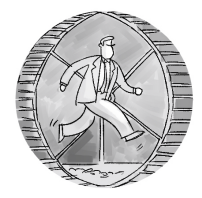
All that matters when you are on a hamster wheel is that you continue to run, even though you aren’t going anywhere. As a product team, this means you keep shipping and shipping products. But - the faster you run, the faster the wheel spins. Usually teams on a hamster wheel are only focused on delivering based on a date, not delivering based on adding value to customers and the business. So, if all the spinning is not even focused on delivering what really matters - you have to ask yourself, what is it all for?
Why is this concerning?
Delivering based on a launch date does not set you up for delivering actual value. It might feel good in the moment to launch, but if you don’t have an actual outcome (goal) you are delivering towards you risk looking back in a year from now and realizing you launched a bunch of stuff but the business has not grown and the product is not more valuable to your customers.
Another consideration is that it leads to burnout since product teams are always rushing to deliver without having a clear sense of progress. Burnout for you. Burnout for your team. The outcome of burnout for your team is never a positive one. You lose your teams’ motivation and many times, you lose the team as they start to look for a new job that will give them a better balance.
How to combat this dysfunction
As a product leader, it is important to drive alignment and focus with clear customer outcomes to improve, a product vision and strategic plan. This sets the stage for focus and long-term direction, rather than running in place. Need help creating this? Check out some of our resources on creating a strong product vision.
2. The counting house: An Obsession with Internal Metrics

If your company is mostly focused on internal metrics, and not focused on the success you are driving for your customers - then you may be experiencing this dysfunction. Yes, every business needs to track revenue. But if you are doing this exclusively and not considering how to measure that your customer is experiencing success, then you are missing out on the big picture.
Why is this concerning?
Teams that only focus on internal metrics tend to have a short sighted view which only leads to short-term value. These teams end up focusing on value extraction where you focus on maximizing revenue, instead of value creation where you make your product more useful for your customers. Value creation happens when you understand how to measure your customer’s success - this is where you can start to identify the long-term impact.
How to combat this dysfunction
As a product leader, it is important for you to be the advocate for your customer. Identify how CUSTOMERS would measure value, and articulate that as part of the value your team is delivering for the product. Check out our Outcome KPI Pyramids for some inspiration on how to do this. Then, as you make product improvements - you can clearly tie it back to the outcomes your customers are looking to achieve.
3. The Ivory Tower: A Lack of Customer Research

This occurs when product teams start to believe they know their customers better than customers know themselves. Due to this, you talk to customers less and less and make product decisions before knowing if a customer really wants it.
Why is this concerning?
You can build a product that the customer doesn’t actually want or need. We know how valuable our prod-dev time is. Don’t waste that time based on assuming our own intuition is better than talking directly with customers. This can also greatly hurt your relationship with stakeholders. If a product is not performing well in the market, teams will lose trust in the decisions that product is making.
How to combat this dysfunction
As stated above, you need to be the advocate for your customer as the product leader. Be sure that the insights you get from customers are used to inform your vision and strategy. And, it is critical that you share these insights broadly (and consistently) and mentor your team to make product decisions based on them.
4. The Science Lab: Optimization to the Exclusion of All Else
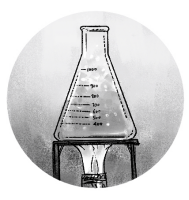
There is almost always a portion of our roadmap that is focused on iterating on the product we have. However, the Science Lab comes into play when you over-index on the small tweaks and small-scale tests and you lose sight of the big picture.
Why is this concerning?
You can’t iterate your way to innovation. If you over-index on iteration, then you are likely under-indexing on investing in strategic milestones toward your vision. You are missing out on the big opportunities that can potentially 10x value for your customers (and your business!) over time.
How to combat this dysfunction
Set guidelines for the percentage of time and resources your team is spending on the broad categories of innovation, iteration, and operation (bugs/tech debt). This will allow you to ensure the team is focused on a balanced roadmap and not just looking for the quick-wins for short term growth. Check out our roadmap guide for some templates to help.
5. The Feature Factory: An Assembly Line of Features
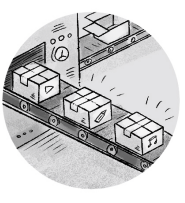
Feature factories are all about shipping. The teams rarely look up from the constant shipping to understand if what they built truly matters. This commonly occurs when product teams believe that there is always the next feature to build to close the next deal. While sometimes this may be the case, it is more common that taking this approach only solves the need of one customer and then you have to keep adding the next feature to appease the next customer.
Why is this concerning?
If you are building feature after feature for individual customers, this is a sales-driven approach and you are likely missing a much bigger market opportunity. You end up building one-off features for individual customers rather than solving the biggest shared problem(s) that meets the needs of many.
How to combat this dysfunction
Set a clear vision and strategic goals for your team, so that they can determine if the initiatives they are taking on are in alignment. These goals should be based on achieving outcomes that will impact many customers (not just one).
6. The Business School: The Overuse of Science and Data
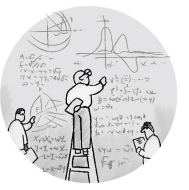
This occurs when you get so wrapped up in analyzing (really, overanalyzing) every decision that you avoid making the tough judgment calls. I’ve seen this at companies who require a business case for each feature they want to build, and then every detail of the business case is scrutinized by stakeholders and the product team modifies it over and over. By the time it is completed, your customers may have decided it wasn’t worth waiting for. Or, perhaps a competitor got to it faster.
Why is this concerning?
All of our product ideas are essentially hypotheses that we are trying out. Of course having data points are important to strengthen those hypotheses, but if you over-emphasize this then you are losing valuable time. Your spreadsheet is still based on assumptions , and you can learn more by testing rather than continual iterations on your business case. Prioritization by spreadsheet also rarely results in a cohesive customer experience.
How to combat this dysfunction
Eliminate project-based business cases. Instead, recognize the hardest decision you already made was on the people you hired and put in place. As a product leader, empower your team with clear outcome goals and be their mentor as they make – and test – hypotheses for how to achieve their goals.
7: The Roller Coaster: Fast-Paced Twists and Turns
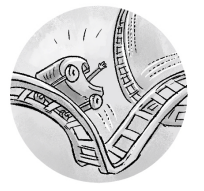
While some pivots are appropriate, the roller coaster comes into play when there are whiplash decisions being made consistently. This can feel like the shiny object syndrome when we consistently change course for each idea.
Why is this concerning?
When these constant changes occur, you are likely not giving enough time for learning and iteration to achieve success on the features you are working on. Due to impatience, it may be tempting to move onto the next big idea - but you could be getting false negatives. This is when a “fail-fast” mentality is taken to the extreme and becomes self-fulfilling - you end up being fast but are more likely to fail. This can also make your product team feel that there is no direction which can be demotivating.
How to combat this dysfunction
The best way to avoid the whiplash is to set a clear direction (a vision and strategy) with milestones and customer outcome goals. By doing this, you stay focused on the goal and not the next new idea.
8. The Bridge to Nowhere: Over-Engineering for Future Unknowns
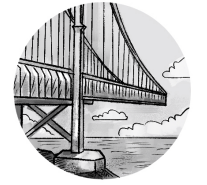
This happens often when engineers start to solve problems for the future without full context into what that future looks like. For example, they may get excited to build a product to scale immediately, when the reality is that it will take time to get users adopting the feature. Many times, it is helpful to plan for some re-work of the product once we have determined it is successful instead of building it “perfectly” on day 1.
Why is this concerning?
It can take a lot longer to launch something that has to scale from day 1, which can mean making a large platform investment before even confirming that the solution delivers the right customer experience. Instead it’s usually better to start smaller and scale as we determine the usage and adoption of the product or feature. This will help us learn quicker and deliver value quicker.
How to combat this dysfunction
By providing engineering with a vision and strategic plan, they will better understand what long-term decisions to make. Also, partner with engineering on how their investments will help meet the goals and align on when the timing is right to make those investments. There is nothing like a well-aligned product and engineering team!
9: The Negotiating Table: Trying to Keep Everyone Happy

Do you ever feel like you are playing roadmap tetris, trying to fit in every project in order to please stakeholders? You are likely experiencing this dysfunction. This is one of the most common ones I see, because it is natural for people to want to be people pleasers. Our job as product managers is to make decisions that will drive value, not to please every person at the company.
Why is this concerning?
If you say yes to every request, then nothing is a priority. This means you are doing a lot of things, but not focused on the initiatives that are really driving value for customers. If our customers are happy, our stakeholders will be happy. It’s just a different way of being a people pleaser!
How to combat this dysfunction
Having a clearer vision and definition of the key customer outcomes you are working towards helps give definition to the direction of the team. Once you have that, you can empower your team to say NO to what will not drive our goals, as this will enable them to say YES to the things that will!
10. The Throne Room: Whipsaw Decisions from the Person in Charge
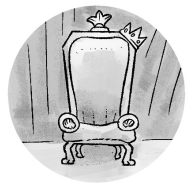
This occurs when the founder or CEO just can't let go, and they want to make every decision. This gives the team very little empowerment and leaves most decisions in the hands of one person.
Why is this concerning?
It just doesn’t scale. As companies grow, it is impossible for one person to make the decision and there will be a lot of waiting for those decisions if it relies on one person. And that one person usually isn't close enough to the problem as the team working on it is. Usually the decisions are made without much explanation which can leave the team wondering why initiatives are being picked. It is important to have a clear prioritization framework that everyone in the company understands, so that empowered decisions can be made based on driving towards customer value and an end-state vision.
How to combat this dysfunction
Getting executive buy-in on the vision and how your team is organized to deliver against this will equal less chaos from the throne room. And, don’t just set a vision and walk away. Revisit it with the executive team every 3-6 months to ensure you are discussing together what has been learned and identify any changes. This helps remind the team where you are headed, but also allows for executives to have an opportunity to express their thoughts and ideas in a forum.
Closing Thoughts
I just gave a quick snippet of the dysfunctions and how to combat them. The reality is, overcoming them takes time. I wish I could tell you it can be done in a week. Or a month. Instead, you have to pick and prioritize which ones to focus on (just like we do in the role of product). It is important to be aware of what dysfunctions you are experiencing, and identify the ones that are impacting your ability to grow the most. That will help you know where to start and to get progress along the way.
The truly best way to combat them is through strong product leadership, and this is why many clients work with us at Prodify as coaches, advisors, and consultants - to get assistance on taking actionable steps to overcome the dysfunctions by identifying clear goals/KPIs, setting a customer-centric vision and strategic plan, getting stakeholder and executive alignment, and empowering teams to prioritize and execute against the vision.
Let’s be real….most of us didn’t go to school for product management, but we instead learned on the job. That could mean we learned really good product habits, but it also means we could have learned really bad product habits and didn’t realize it! I can say from personal experience that early in my career, I was a PM at a company that encouraged business cases for every project. I thought this was normal and the “right” way to do product and had no idea it was actually a dysfunction and impacting my ability to make true product decisions and deliver value. Luckily, I had great coaches to learn my way out of that and I witnessed the impact you can have as a product leader as you work your way out of the dysfunctions.
If you are experiencing these dysfunctions and interested in learning how to overcome them, email me at sara@prodify.group or request a call.
Topics: Coaching, Build What Matters Book, Product-Driven
Written by Sara Zalowitz
Sara is a Senior Product Advisor and Coach with Prodify. Previously, she was Chief Product Officer at Rent the Runway, VP of Digital Innovation at Marriott, VP of Product at WeddingWire and Barnes and Noble, and the Director of Product at Home Shopping Network.
Recent Posts
Assessing the ROI of Your Product Strategy
Advisor Case Study: Confidence as the Key Outcome
How to Perform Effective Midyear Check-ins